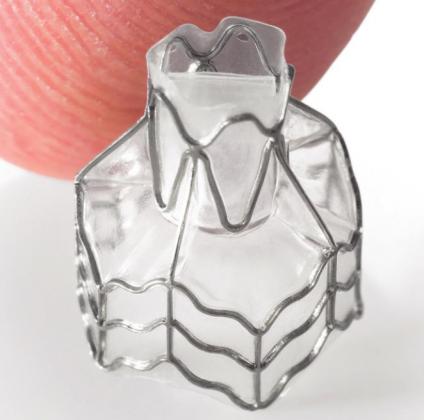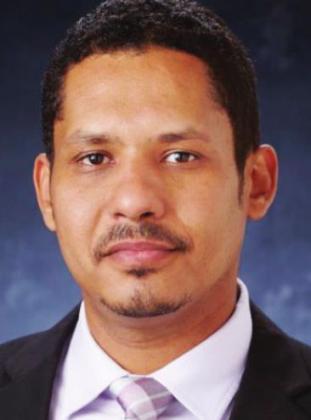MATTHEW WHALEY COUNTS THE 14 STAIRS in his central Toledo home. Not long ago, he could only make it halfway up before he had to stop, struggling for air. “I was basically at the point where I thought this is it for me,” he said. “I’d given up on improving. This was how my life was going to be.”
Whaley, 68, suffers from chronic obstructive pulmonary disease with emphysema—a chronic lung condition that can cause extreme shortness of breath, making even simple tasks like walking to the mailbox feel insurmountable.
Thanks to a newly available treatment at The University of Toledo Medical Center, Whaley can now breathe easier. He’s off oxygen, back on his feet, and doing most of the things he once enjoyed. “I had the procedure done and I have a new lease on life. I can go up and down the stairs. I can cook like I used to cook. I can go shopping,” he said. “Before, if I didn’t have to go out of the house, I didn’t. Now I can’t stay home.”
Whaley was one of the first emphysema patients to undergo bronchoscopic lung volume reduction at UTMC, a minimally invasive treatment that uses small one-way valves to keep air out of the lung’s most damaged parts while allowing healthier lung regions to function more normally.
Bronchoscopic lung volume reduction, or BLVR, gained approval from the US Food and Drug Administration in 2018.
Dr. Mohamed Omballi, an interventional pulmonologist at UTMC who performed Whaley’s treatment, said the minimally invasive procure has opened the door to patients who had explored all other alternatives without success. “Three years ago, any patient with severe emphysema who was over 65 and didn’t meet the criteria for a surgical lung reduction would have no options,” he said. “These patients are on the inhalers. They’ve tried pulmonary rehab. Many will have been evaluated for lung transplants and either been declined or decided against such a difficult surgery. It’s a brilliant procedure.”
Traditionally, centers have limited lung transplants to those aged 65 and younger.
In emphysema, tiny air sacs within the lungs slowly degrade. The damage reduces the surface area within the lung able to capture oxygen and prevents the lungs from properly contracting to allow old air out and bring in fresh, oxygen-rich air.
Smoking is the most common cause, though air pollution and exposure to certain chemicals also can bring about emphysema. The American Lung Association estimates more than 3 million Americans have been diagnosed with emphysema.
“Patients are very limited in what they can do. Some can’t even take a shower by themselves,” Omballi said. “Their lungs don’t allow them to exhale, trapping the air they previously breathed in. Putting a valve in that segment to deflate the diseased part of the lung allows more space for the good part of the lung to expand and bring in oxygen.”
There are currently two FDA approved valves. At UTMC, Omballi uses the Zephyr valve.
Patients are either put under conscious sedation or given a general anesthetic. A physician then guides a scope through the mouth and into the lung, carefully placing three to five valves within the bronchial tubes leading to the most damaged part of the lung. The procedure itself is typically completed in less than 30 minutes. Patients generally stay three to five days in the hospital to recover and be monitored.
Traditional options, such as surgical lung volume reduction—which physically removes diseased portions of the lung—and lung transplants, have significantly more recovery time and are much more invasive.
The Zephyr procedure is covered under Medicare and Medicaid and by many private insurers. Individuals who are interested in learning more about the procedure, including a series of educational webinars that begin November 4, can visit UTMC’s pulmonary care website or call 419-383-6644.
Omballi said the procedure has been well studied and shows significant benefits in improving patients’ quality of life. Some are able to come off oxygen or stop taking steroids.
In Whaley’s case, his lung function doubled following the June 28, 2021, procedure. “I’ll never forget that day,” he said. “That’s the day my life changed.”
Tyrel Linkhorn is a communications specialist at The University of Toledo.



